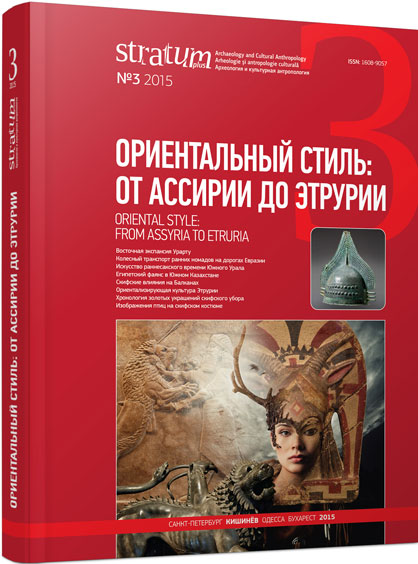Искусство раннесакского времени Южного Урала и его восточные параллели
The Early Saka Art in the Southern Urals and Its Eastern Parallels
Author(s): Elena V. Perevodchikova, Alexander D. TairovSubject(s): History, Archaeology, Fine Arts / Performing Arts, Cultural history, Visual Arts, Ancient World
Published by: Издательский дом Stratum, Университет «Высшая антропологическая школа»
Keywords: Southern Urals; Eurasian steppes; early nomads; early Saka period; art; Scythian animal style
Summary/Abstract: The local features in the nomadic art of the Southern Urals have usually been noticed from the end of 6th — 5th BC. The art of the earlier nomads is usually considered as a whole thing for all over the Eurasian steppe. But the latest discoveries allowed us to see specifics of the early South-Ural masterpieces.Analyzing the early pictures of animals, we have divided them into two groups. The first, archaic one (innumerous yet) is characterized by both common markers of the early examples of the Scythian Art and the specific eastern qualities. The second, the later and more representative one, we named “Kichigino” Group. It is characterized by some signs that were never found earlier. They are images of lions, not abstractive feline predators, a wide distribution of the complicated curl, a combination of the complicated curl with three-dimensional images, compositions from gold foil.The art of the South-Ural nomads of the Early Saka period finds a great deal of parallels in the nomadic art of the Eastern part of the steppe Eurasia. This fact can be evidence of the common historic-cultural area form the Southern Urals to the Sayano-Altay. There was an exchange of artistic ideas in the framework of this territory.
Journal: Stratum plus. Археология и культурная антропология
- Issue Year: 2015
- Issue No: 3
- Page Range: 121-141
- Page Count: 21
- Language: Russian
- Content File-PDF

